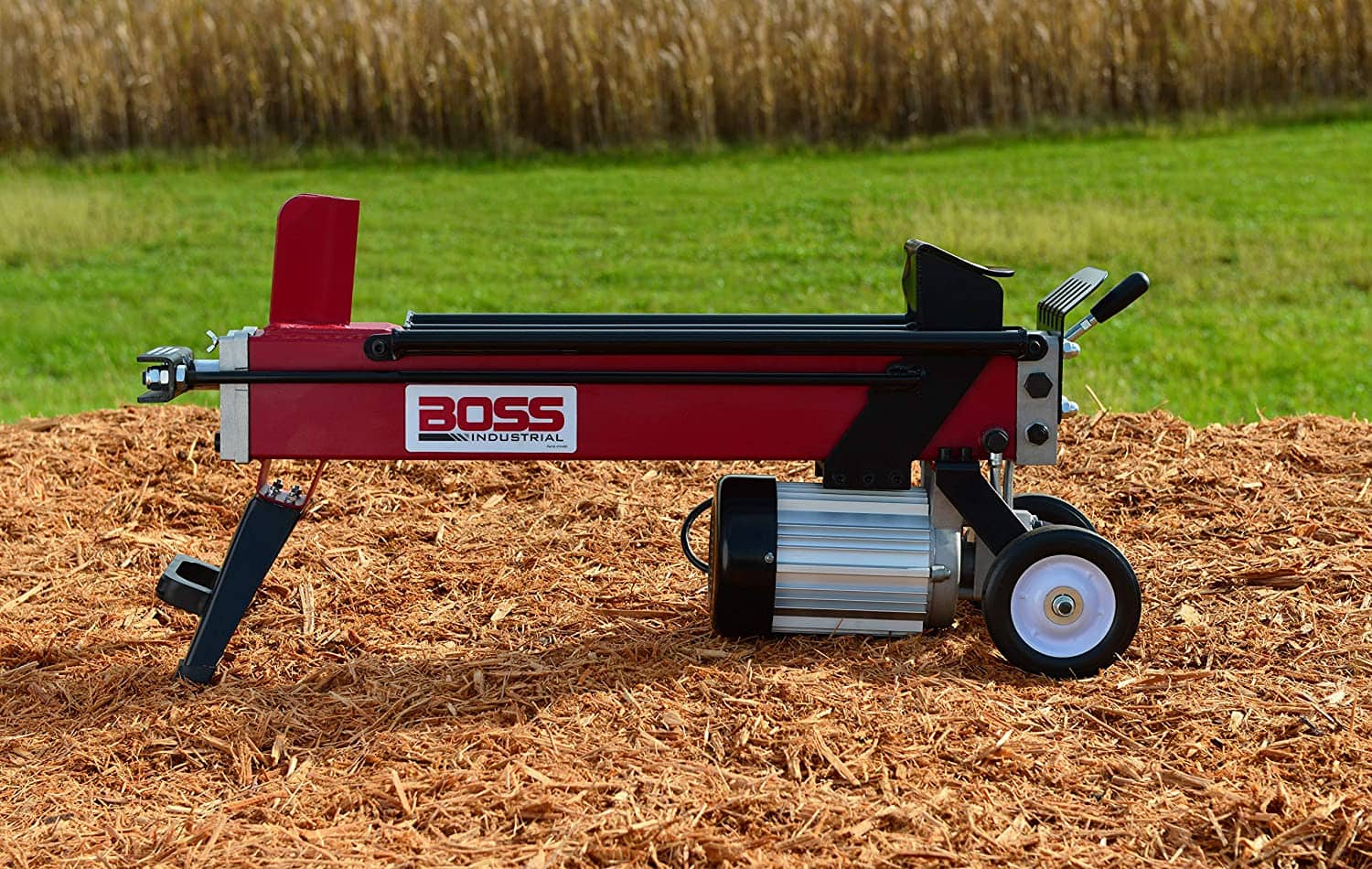- Common Stihl 500i Problems & Troubleshooting - January 14, 2023
- Best Firewood Kindling Splitter - November 21, 2022
- How to Find the Best Hewing Axe - November 8, 2022
A log splitter can save time and wear and tear on your body if you burn a lot of firewood yearly. Maybe you are considering installing a wood stove, but the task of splitting wood seems like too much to take on. There are many different log splitter options to help you get the job done promptly.
Despite what you might think, log splitters don’t have to be huge or expensive to work well. Many electric log splitters cost under $600 and can be stored in a small space when not in use.
When my husband and I were in our 20s and early 30s, we split all of our firewood by hand. Getting a log splitter was a real game-changer. Now we do not have to spend as much time on firewood each year, and we can save our physical efforts for other tasks.
Those in the landscaping, logging, or other forestry-related fields can benefit from purchasing and learning how to use a log splitter because they help use any limbs and debris on a site. Instead of it just being wasted, there is firewood to sell locally.
Learning to use a log splitter is very easy despite how intimidating some of the larger splitters look to someone who is not used to using equipment of this caliber. In this guide, I will introduce you to the different types of log splitters available and show you how to use them safely.
Commonly Available Log Splitter Types
Gasoline
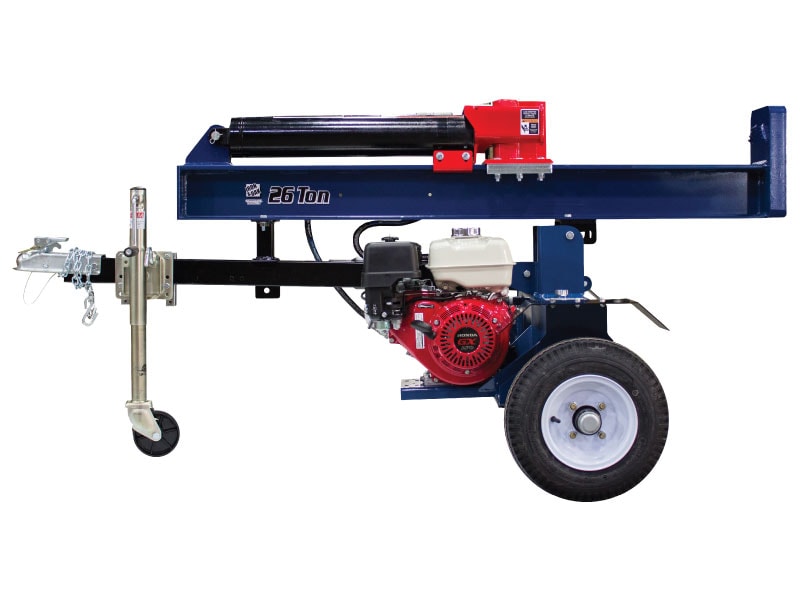
The Iron & Oak 30-ton Log Splitter comes with a Honda GX series engine. I recommend this splitter for people that want a high-quality gasoline splitter for personal or professional use.
Gasoline-powered log splitters are one of the most common log splitters. Practically any log splitter that has a splitting force of 20 or more tons is gasoline-powered.
Gasoline-powered splitters are the industry standard for professionals and homeowners that want the ability to use their splitter practically anywhere and split larger logs.
The main disadvantage is that you have to keep a supply of gas and oil on hand, and you cannot use a gasoline-powered splitter indoors if the weather is foul.
Electric
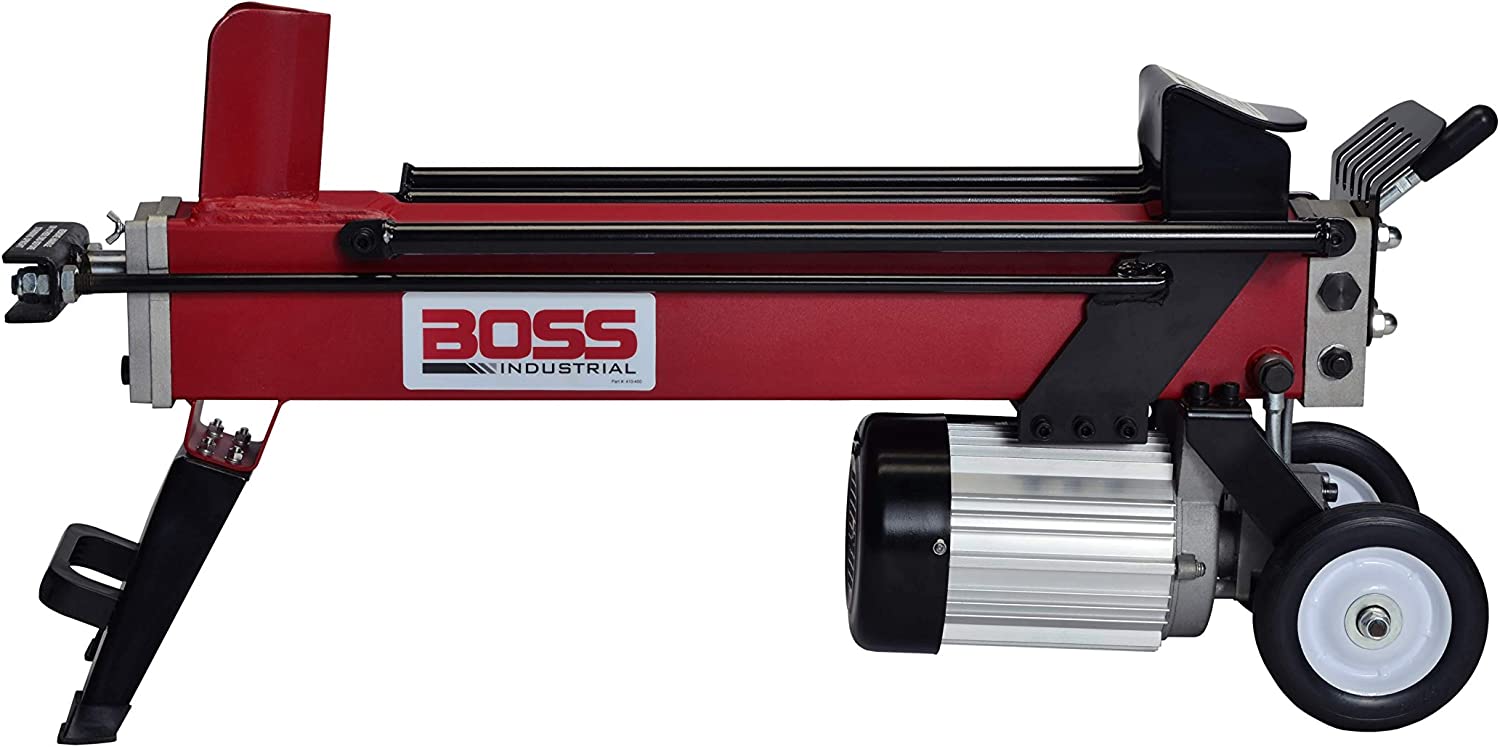
The Boss Industrial 5-ton electric log splitter is the model I recommend for homeowners that want a reliable, affordable, and easy-to-store splitter to reduce their workload
An electric log splitter is a great machine for people that just want to split enough firewood for themselves and do not care about splitting huge logs.
For example, if you buy your firewood from someone that splits rounds into quarters or halves, you can use a small electric splitter to cut it down to size further.
My husband and I have a smaller wood stove that performs much better if the logs are smaller. We use a Boss 5-ton electric log splitter and a 4-way splitting wedge that slips on to split wood so it is ready to burn with the most efficiency.
Electric log splitters are very affordable, and you can use them indoors and in neighborhoods where you need to keep noise levels low.
Manual
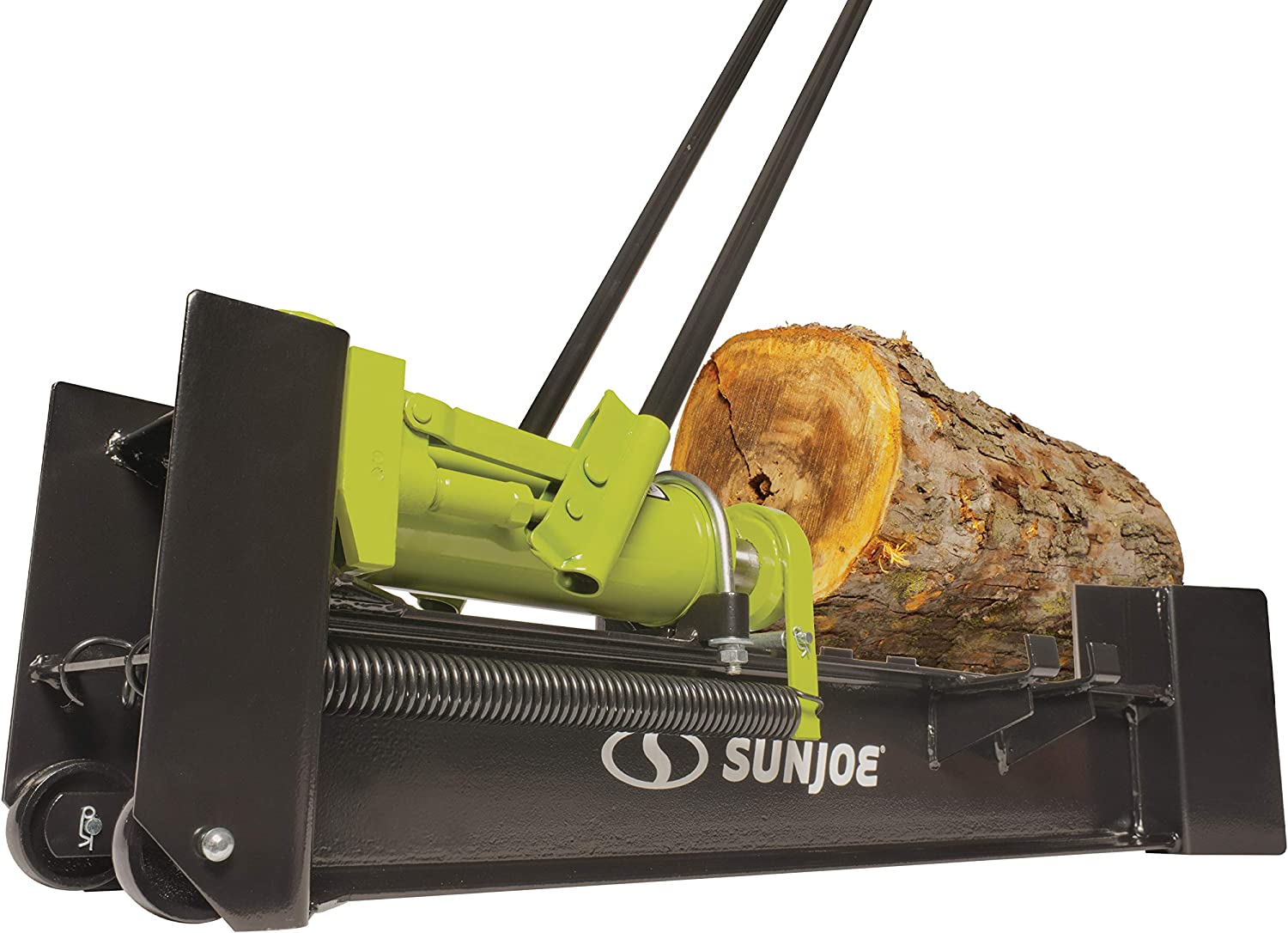
There are manual devices that help you split firewood. Although these do not come close to the ease of use and labor-saving capabilities of electric and gasoline log splitters, they are still better than swinging a log splitting maul daily.
Most manual log splitters use hydraulics, while others require force from you or weights. These types of splitters are inexpensive, lightweight, and very easy to store when not in use.
The Sun Joe Hydraulic Log Splitter is affordable and popular for those who want a log splitter that does not rely on gas or electricity.
Good safety practices should always be the first step in operating any log splitter
Safety is very impoparamounter what type of log splitter you use. Log splitters are powerful machines that exert a lot of force.
Logs can throw splinters out; sometimes, even part of a split log may be ejected with more force than you might expect.
Wear the right gear to stay safe
Always wear safety glasses. When I use a splitter, I prefer safety goggles that provide complete 360-degree protection.
It is amazing how little pieces of debris can find their way around the edges of the common wrap-around style safety glasses, so many people wear.
A good pair of gloves is also recommended to prevent a lot of splinters in your hand at the end of the day.
Dress appropriately
Jeans combined with a good pair of closed-toed work boots are a great option for safety when operating a log splitter. Some people prefer safety toe or “steel toe” work boots when working with heavy objects like wood.
Never wear clothing that is too loose and could get caught in the machine. Long hair must be pulled back and secured. Any dangling jewelry should be removed before using a log splitter.
Never operate a splitter in even light rain or drizzle.
Log splitters should only be used when conditions are reasonably dry. You can use a gasoline-powered log splitter under a structure with a roof that is open on the sides to allow good airflow.
Electric log splitters can be used inside any structure. Never use an electric log splitter when there is even a slight drizzle of rain. The risk is electrocution, but it is also just not good to expose any machine to a lot of water.
Read also: What Kind of Lumber is Good for Rainy Weather?
How To Use Gasoline Or Electric Log Splitters
Position your log splitter on level ground
You must operate your log splitter in a level position. Hydraulic fluid cannot flow properly when a splitter is not level. Unfortunately, this is a mistake people often make when first using a splitter. Typically they think that their splitter has something majorly wrong with it.
Plug in or check fuel levels. Then, top off the gas as needed
An electric log splitter can be run on an extension cord capable of handling at least 15 amps. Any standard household outlet may be used. Gasoline log splitters use traditional gas.
You can split a lot of wood on a full tank, but it pays to have some extra on hand for those long days of splitting.
Add your log to the splitter
Pick up the log you want to split and place it on the splitter, so it is touching the splitting blade. This helps ensure a cleaner split with less force required than if you position it further away and the piston has to push it forward.
It also makes it less likely that the log will change positions and not split correctly or fall off your splitter entirely.
Start your splitter
Gasoline log splitters usually come with pull starts, but more expensive professional-grade models may have push-button electric starts. It may take a few tries to get your splitter started, but it will keep running until you press the off button, so you should not have to use the pull start very often during a splitting session.
Under cold conditions, it may take a few tries to get your splitter going. Electric log splitters have a push button start or switch.
Use the lever to operate hydraulics and feed the log through the blade
Electric and gas log splitters typically have a lever that you push to tell the hydraulics to guide the ram into the log and push it against the blade. If your machine has an auto return, it will start to go back into position to do the next split automatically when you release the lever. However, some machines may require you to reverse manually by pushing the lever in the opposite direction.
Larger logs may not split immediately. In fact, you may have to reverse and repeat the split several times to get it to split. However, you will get better at “reading the wood” and positioning logs so that the splitting wedge hits a crack or weak spot, and you get more splits on the first try.
Split pieces may drop to the side or be caught by a log cradle, depending on what model of log splitter you own
More fundamental and inexpensive log splitters just allow split logs to fall to the ground. Other types of log splitters may have a table or log cradle that will catch multiple pieces of wood before you need to clear it.
If your splitter did not come with a table or cradle, it might be possible to purchase one that will fit. Check out your log splitters user guide or the manufacturer’s website for information on available accessories.
You may be able to set up your splitter so you can just feed split pieces directly into the back of a truck if needed or at least close enough that you don’t have to carry them far. This is something to consider on a project that can save a lot of time and work.
Operating a Manual Log Splitter
The steps for operating a manual log splitter are very similar. Therefore, even though you are not using a gas or electric-powered machine, you must practice the same safety precautions when using a manual splitter.
To use a manual log splitter with hydraulics, you need to load your log into the splitter and use the handles to pump the hydraulics manually to drive the record into the wedge. If you have ever used a jack to change your tire, then you have used this style of hydraulic before.
Other types of manual log splitters include slide hammer splitters. These require a person to swing a maul, but you have to do it less to split hard-to-split rounds. I do not recommend slide hammer splitters because they still require a lot of physical effort to use, and if you have not used a maul a lot already, it can be hard to aim properly, which can be a bit dangerous.
Tips For Using A Log Splitter
Keep your splitter close to your logs
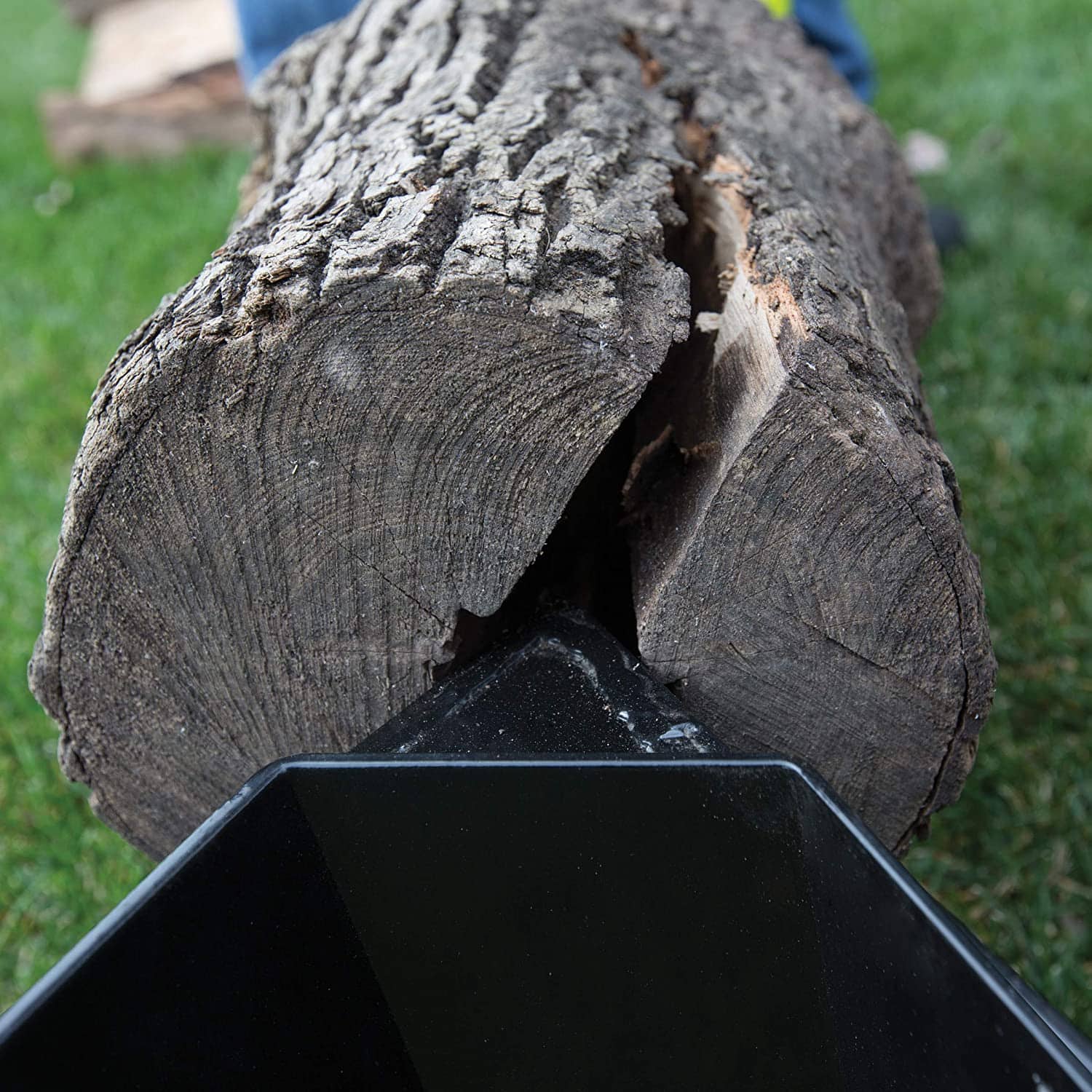
Move your log splitter as close as possible to the wood you are splitting. This can mean moving your splitter multiple times in a day if you are working through a large amount of wood.
Consider purchasing a 4-way splitting wedge for your log splitter
A lot of log splitters do not come with a 4-way splitting wedge, but you can usually buy one separately. A 4-way splitting wedge slides on and off your regular log splitter splitting wedge and can cut your splitting time in half since you can get four pieces of wood from a log instead of just two. Expect to pay $60-$120 for a 4-way wedge depending on the size and brand of your log splitter.
Inspect your log splitter before each use
Always check for any signs of leaking fluids or damage. Catching a problem early on can make it a lot easier and less expensive to fix.
Don’t push it when it comes to log size. All splitters have a maximum diameter and length specification
No matter what size log splitter you are operating, it has its limits. Many log splitter issues come from operators pushing their splitter’s limits. While this is less likely to happen with larger and more powerful splitters, it still can.
Check the maximum diameter and length that your splitter is rated for and stick to it. Besides, you probably don’t want to lift a log that big anyway. Of course, it can be tempting if you have someone helping you.
Generally speaking, as long as you stick with your splitter’s diameter and length specifications, you will not be in danger of putting too much weight on your splitter.
If your splitter has a hydraulic log lift, ensure you stay within the weight range specified for your model. Overloading a log lift can result in damage to the lift and hydraulics.
How to Use a Log Splitter: FAQs
Question: How big of a log splitter should I buy?
Answer: Many people get a larger log splitter than they really need. A log splitter in the 5-10 ton range is plenty for most people that are just splitting small to moderate logs to meet their own firewood needs. On the other hand, larger splitters are great for those that want to split species like Hickory or Locust, which are more difficult to split or that want to process larger volumes of firewood. Forestry Pros has a variety of articles on log splitters you might want to take a look at before deciding which is best for you.
Question: How do I maintain my log splitter?
Answer: Always keep your log splitter stored in a dry location. Large log splitters can be stored outside as long as they are under a protective cover. Do not just cover them with a cheap tarp. There are special log splitter covers that you can buy that are designed to offer better and more long-lasting protection.
Log splitters need to have their oil changed at least annually, but if you are a professional that is using your splitter a lot, it may need to be done more often. Check hydraulic fluid levels regularly and look for any leaks in hoses. If there is a leak, replace the hose immediately to avoid losing hydraulic fluid. Tires pressure and wear and tear should be checked every season and before any major trip down a highway.
The hydraulic ram will need to be lubricated. Always check your user manual for specifics on how to maintain your exact model of log splitter.
Question: Log splitters seem to be pretty easy to operate. Are they safe for teens to use?
Answer: While it is great to get young people outdoors and helping with tasks, they should only be allowed to work around a log splitter with adult supervision. Log splitters exert a lot of force and require paying a lot of attention to what you are doing. At the same time, there is no law stating that you have to be a certain age to operate a splitter, so this decision is up to the parent to decide.
Conclusion
Log splitters are easy to learn how to use and save a lot of time and energy. No matter what size log splitter you are operating, paying attention and following good safety and maintenance practices are essential.
Gasoline and electric log splitters are operated the same way, while manual splitters require pumping hydraulics manually or physically hitting a bar with a maul.
Remember to take your time the first few times you use your log splitter and always read your manual after purchasing. If you lose your manual, it should be easy to find a copy in pdf form online or request one from the manufacturer.



